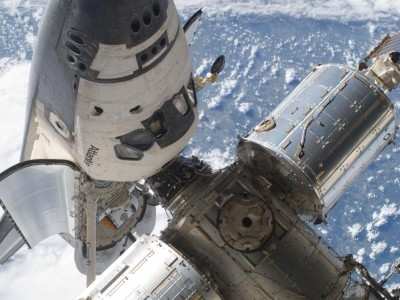Sun, Jul 10, 2011
ImageIQ And Lerner Research Institute Both Incubated At
Cleveland Clinic
ImageIQ, Inc. announced this week that NASA’s Ames
Research Center in Moffett Field, California and The Midura
Laboratory at the Lerner Research Institute (LRI) of Cleveland
Clinic in Ohio have selected ImageIQ to assist in their study of
spaceflight-induced vascular alterations in the lower leg. ImageIQ
will provide customized image acquisition and analysis for a
vascular research study aboard the Atlantis STS-135 mission, the
final mission in the shuttle program.

ImageIQ says it will use its extensive
software library and preclinical imaging expertise to develop
highly custom-tailored two- and three-dimensional imaging and image
analysis techniques to produce objective and quantified data. The
study is a collaborative effort among NASA Ames, BioServe Space
Technologies, and Amgen that will evaluate a novel therapeutic
countermeasure to prevent space flight induced bone loss in
mice.
In addition to oversight, NASA Ames will provide the necessary
funding to execute Dr. Midura’s investigation of lower leg
vascular alterations resulting from space flight. The Midura Lab
will leverage decades of preclinical life science research
experience the ImageIQ team garnered from its tenure inside
Cleveland Clinic, where it existed as the Biomedical Imaging and
Analysis Core for the past decade.
“We welcome the opportunity to work with NASA and the Midura
Lab to support such a unique and exciting musculoskeletal
study,” said Dr. Amit Vasanji, Chief Technology Officer at
ImageIQ. “The complexity of vascular remodeling research will
benefit from a finely-tuned and sophisticated approach to image
analysis and visualization. ImageIQ provides a unique combination
of preclinical imaging, image analysis, and software engineering
expertise that will greatly enhance the NASA research study
associated with shuttle Atlantis’ final voyage. We are
excited to apply our proprietary approach to orthopedic image
acquisition and analysis developed over the past 10 years to
provide highly quantitative data in the shortest amount of time for
the Midura Lab at Cleveland Clinic.”

“The complexity of our vascular
remodeling research requires a finely-tuned and sophisticated
approach to image analysis and visualization. As my lab conducts
more and more complex musculoskeletal investigations, the use of
custom-tailored imaging and image analysis will continue to be an
indispensable tool to produce objective data of high precision and
rigor. The only cost-effective and thorough way to analyze large
volumes of multi-dimensional image data is through automated and
custom-tailored software,” said Ronald Midura, Ph.D. Full
Staff in the Department of Biomedical Engineering at LRI.
More News
Convective SIGMET A weather advisory concerning convective weather significant to the safety of all aircraft. Convective SIGMETs are issued for tornadoes, lines of thunderstorms, e>[...]
Aero Linx: United Flying Octogenarians WELCOME to a most extraordinary group of aviators, the United Flying Octogenarians (UFO). Founded in 1982 with just a handful of pilots, we h>[...]
Pilot’s Decision To Attempt Takeoff With Frost Covering The Airplane’s Wings Analysis: The pilot of the light sport airplane was preparing to depart for a cross-country>[...]
“We’ve paid for the cable line’s repair for the customer and have apologized for the inconvenience this caused them...” Source: Some followup info from an A>[...]
Coupled Approach An instrument approach performed by the aircraft autopilot, and/or visually depicted on the flight director, which is receiving position information and/or steerin>[...]
 ANN's Daily Aero-Term (12.01.25): Convective SIGMET
ANN's Daily Aero-Term (12.01.25): Convective SIGMET ANN's Daily Aero-Linx (12.01.25)
ANN's Daily Aero-Linx (12.01.25) NTSB Final Report: Remos Aircraft GmbH Remos GX
NTSB Final Report: Remos Aircraft GmbH Remos GX Aero-News: Quote of the Day (12.02.25)
Aero-News: Quote of the Day (12.02.25) ANN's Daily Aero-Term (12.02.25): Coupled Approach
ANN's Daily Aero-Term (12.02.25): Coupled Approach




